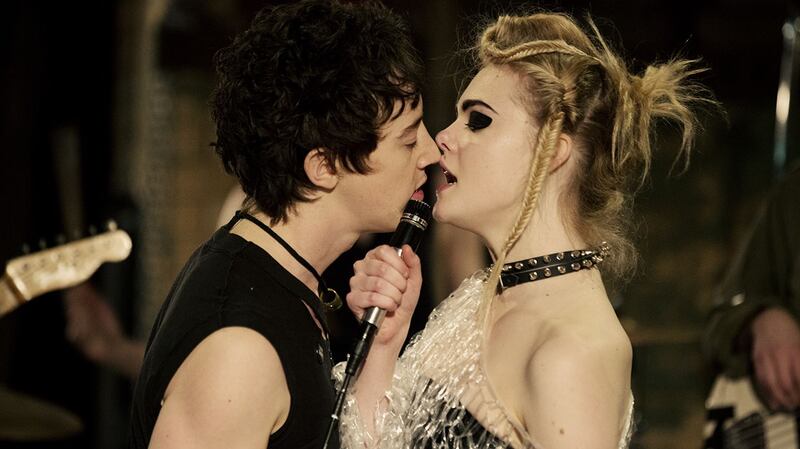I have, in this place, occasionally laid out my lack of interest in "authenticity". That's to say I try not to care much if they've got the bonnets right in Regency dramas or the cars perfect in retro-noir. After all, Steve McQueen just wore his own clothes in The Great Escape, and that's the best film ever made (near enough, anyway).
Anybody even half-familiar with punk – a movement that ended in late 1977, despite what some Americans say – will, however, have enormous difficulty digesting John Cameron Mitchell’s aggressively appalling musical fantasia.
Although the director is sympathetic to the genre, the film looks to have been composed by somebody who knows it only through shocked reports on contemporaneous tabloid newspapers and early-evening telly.

More than anything else How to Talk to Girls at Parties suggests "punk rockers" as represented in a 1970s British sitcom. Imagine an episode of Terry and June in which the suburban couple were inconvenienced by Dennis Degenerate and Vanessa Vomit.
The thing has been around almost that long. Filmed in Sheffield three years ago, before premiering limply at the 2017 Cannes Festival, it arrives already wreathed in the stench of underachievement. Based on a story by Neil Gaiman, the picture follows Enn (Alex Sharp), an archetypal young introvert, as he tries to make his way in grim 1970s Croydon.
One evening, after catching a set by the nearly plausible Dyschords, he finds himself in a vast house peopled by oddballs in shiny clothes. We soon learn that they are aliens whose culture – in an unnecessary heightening of what went on in England then anyway – is ruled by conformity and adherence to tradition.
There's a lot of latex. There are many primary colours. There is absolutely nothing to suggest travel from other planets. Somehow or other Zan (Elle Fanning), one of their number, is permitted to leave the compound and pound the streets with young Enn. But she will be leaving soon. It's Brief Encounter with added lessons on how to become Neil Gaiman.
The two leads aren't bad. A graduate of the stage production of The Curious Incident of the Dog in the Night-Time, Sharp makes something poignant of an off-the-peg loner seeking solace in popular culture. Fanning has only her movie-star charisma to wield against the character's pantomime cliches, but few actors her age have quite so much of that old-school sparkle. She does fine.
Were we not committed to telling the whole truth we would draw a veil over Nicole Kidman's unfortunate performance and allow that brave actor to enjoy the rest of her renaissance. To suggest she manages a combination of Vivienne Westwood and the Acid Queen in Tommy would be to promise more fun than she actually delivers.
Playing an unlikely middle-aged punk auntie, Kidman, who has done perfectly decent English accents before, chews her vowels frantically, as if the dialogue were a physical barrier and escape from this embarrassment lay on the other side.
The kindest thing one could argue is that How to Talk to Girls at Parties has the ramshackle look of a film that hard-working cranks might eventually turn into an irony-fuelled cult. Don't rule out its becoming a successful stage musical in a decade or two's time. John Cameron Mitchell, gifted creator of Hedwig and the Angry Inch, has already had at least one of those.
No such future success will make the source material comfortable viewing for those who came up with punk. Does one of the pseudo-Damned numbers really end with a musical quote from The Beatles? It does. Yes or Emerson, Lake & Palmer could hardly have been less suitable.












